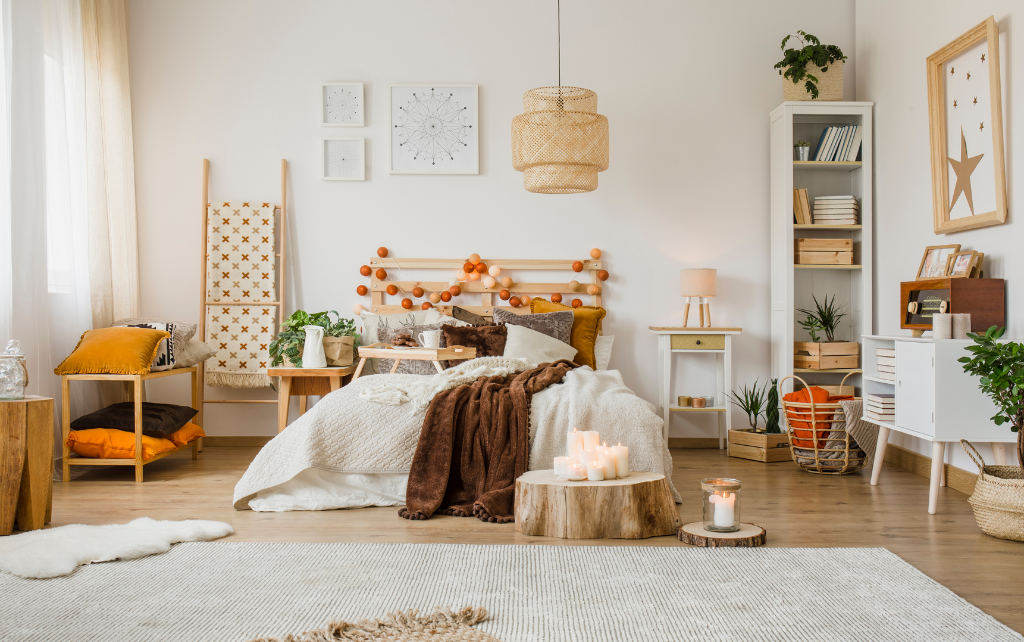
In an age of constant notifications, stressful schedules, and fast-paced living, many are seeking sanctuary at home. That’s where hygge (pronounced “hoo-gah”) comes in—a Danish concept that captures the feeling of cozy contentment and well-being through simple pleasures. It’s not just about candles and soft blankets—it’s about creating an environment that nourishes your soul.
Let’s explore the science of cozy and how to hygge your home for warmth, calm, and comfort all year round.
What Is Hygge, Really?
Hygge is more than interior design—it’s a lifestyle. Rooted in Danish culture, it refers to a mood of coziness, connection, and appreciation for the present moment. Think of it as a mental reset—where comfort, warmth, and simplicity replace stress and overstimulation.
Scientifically, hygge aligns with what researchers call “environmental self-regulation”—how we shape our surroundings to feel emotionally safe and balanced. A hygge home encourages serotonin release, lowers stress hormones, and fosters a sense of belonging and peace.
1. Lighting: The Foundation Of Coziness
The Danes are famous for using soft, layered lighting to create inviting spaces. Instead of harsh overhead lights, opt for:
- Warm-toned bulbs.
- Fairy lights or string lights.
- Candles (real or LED for safety).
- Table and floor lamps with dimmers.
Studies show that warm, low lighting can help reduce cortisol levels and make a space feel more secure and relaxing.
Tip: Cluster candles or small lamps in corners to create pockets of glow, especially in the evenings.
2. Texture And Touch: Appeal To The Senses
Hygge is deeply tactile. Layer your home with textures that invite touch and offer comfort:
- Chunky knit throws.
- Faux fur rugs.
- Velvet cushions or linen drapes.
- Wool or flannel bedding in cooler months.
Research in neuroscience shows that pleasant tactile experiences—like wrapping yourself in a soft blanket—can trigger the brain’s pleasure centers and reduce anxiety.
3. Natural Materials And Neutral Colors
Nature plays a key role in hygge. Bring the outside in through:
- Wood accents (furniture, bowls, candle holders).
- Stone, clay, or ceramic décor.
- Live plants or dried flowers.
Stick to a neutral, earthy color palette—think warm whites, soft grays, and muted browns. These tones mimic nature and help calm the nervous system.
4. Create Cozy Corners
Every hygge home needs a “hyggekrog”—a cozy nook or corner where you can unwind. It doesn’t need to be big or expensive.
All you need is:
- A comfy chair or floor cushion.
- A soft blanket.
- A small side table for tea, books, or candles.
This space becomes your go-to for reading, journaling, or simply unplugging.
5. Scent And Sound: The Invisible Layers
Smell and sound are powerful influencers of mood. Use them intentionally:
- Scented candles or essential oils with notes of vanilla, cedar, or cinnamon.
- Soothing playlists with jazz, lo-fi, or acoustic sounds.
- Nature sounds like rain or crackling fireplaces.
These sensory inputs create an immersive experience, helping your mind associate your home with safety and comfort.
6. Mindful Details: Less Clutter, More Intention
Hygge isn’t about buying more—it’s about curating your space intentionally. Declutter regularly, keep only what brings joy or purpose, and display meaningful items like:
- Family photos.
- Travel souvenirs.
- Handwritten notes.
- Your favorite mug.
The goal is to fill your home with objects that tell your story—not clutter that overwhelms.
Final Thoughts
Hygge is not a trend—it’s a timeless reminder that our surroundings affect how we feel. By designing your home with warmth, softness, and intention, you create a space that supports mental wellness and joy.
Whether it’s through a cozy blanket, flickering candlelight, or a shared cup of tea, hygge invites us to slow down, savor the moment, and embrace simple comfort—one room at a time.
Find more insights in these resources :
https://exclusivenewstoday.com
https://premiobrasilambiental.com
https://newportbluesfestival.co.uk
https://creativehomestaging.net






